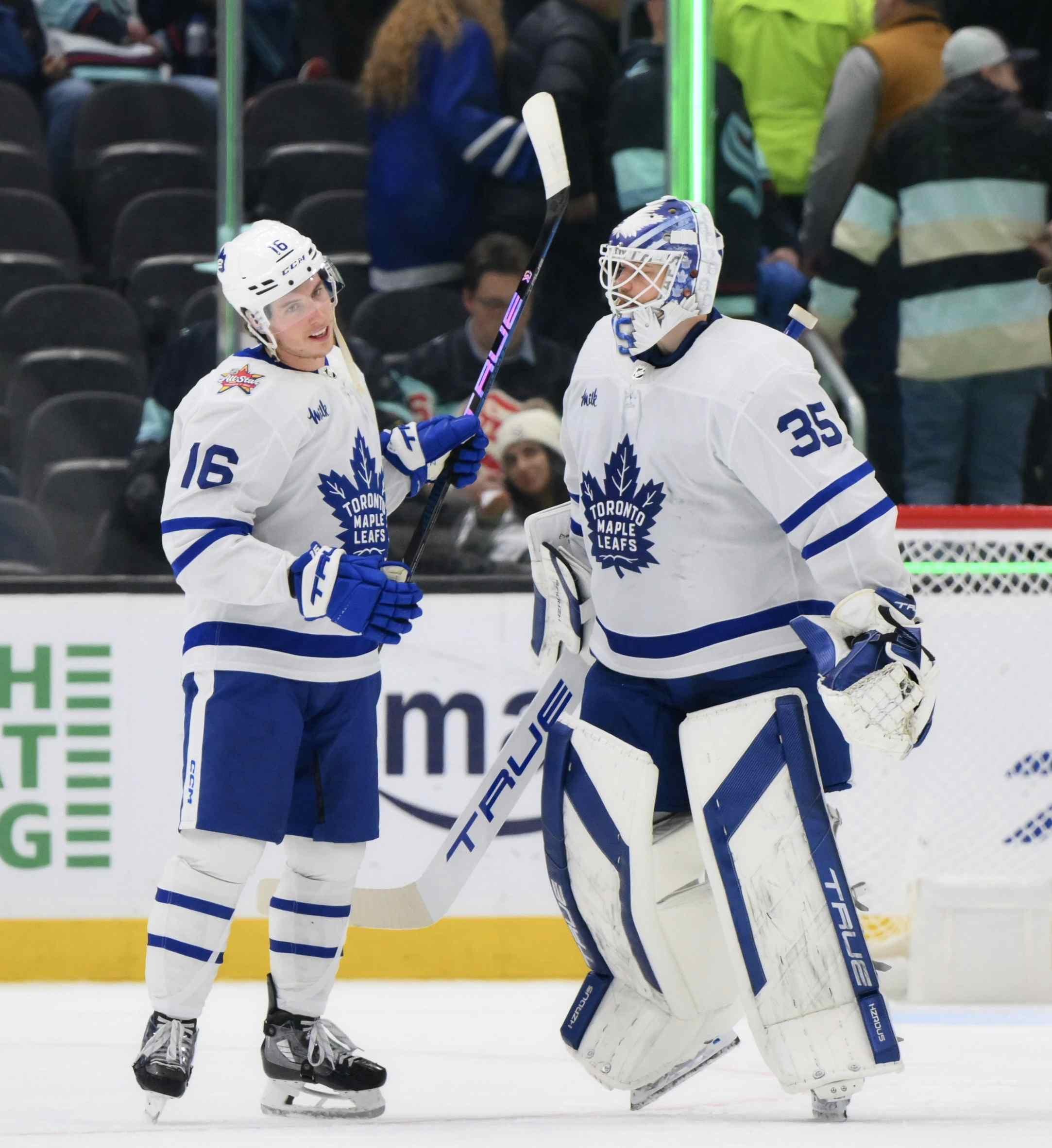What the Grabner deal tells us about the Maple Leafs’ radical approach to team building

Photo Credit: Brad Penner/USA TODAY Sports
Last week the Toronto Maple Leafs completed one of the weirdest hockey trades in recent memory, dealing an enormous amount of high-yield prospect wealth in exchange for New York Islanders forward Michael Grabner – a decent-enough middle-six winger on a strange contract. It’s a trade that, in some respects, broke conventional hockey-trade analysis.
Acquiring a player like Grabner, an effective penalty killer who has high-end wheels and has generally scored at an auspicious rate at 5-on-5 but isn’t really a first-line caliber forward, fits in with Toronto’s recent modus operandi. He’s a veteran forward on an expiring deal, after all, and he can be flipped at the deadline.
Where Grabner differs from the myriad veterans whom Toronto has brought to training camp for a professional tryout, or from the likes of PA Parenteau and Shawn Matthias who were signed on the cheap in free agency, is that he wasn’t ‘free’ – at least in terms of the acquisition cost. Instead, he cost the Maple Leafs four prospects including Matt Finn, Carter Verhaeghe, Cristopher Gibson and Tom Nillson, and an NHL player in Taylor Beck.
It’s facile to declare that the Maple Leafs exchanged nothing of value for Grabner, but that isn’t quite right.
Beck will play games this season, and the four additional prospects have some upside – even if they were all falling down the club’s prospect depth chart (only Verhaeghe and Finn cracked TLN’s Top-20 Leafs prospects this August, and neither player was ranked higher than 15th). It’s why I’d describe the prospects whom the Maple Leafs sent to Brooklyn as ‘high-yield’.
The always spending-conscious Islanders essentially purchased the hockey equivalent of junk bonds, in bulk, from the Maple Leafs and also netted themselves some not insignificant savings for the upcoming year (Grabner, though he’ll only cost $3 million against the salary cap this upcoming season, is due $5 million in actual salary). As a straight salary dump (Beck for Grabner), this works for the Islanders, and if they receive any additional NHL games played from the bevy of prospects they received, that’ll be akin to found money. It’s a low cost bet. In fact, it’s a money saving bet.
What the Maple Leafs are playing at is altogether different, but this is the most radical expression yet of their increasingly obvious plan to leverage their incomparable budget to supplement a program of short-term trade market speculation, using veteran assets. In addition to Grabner – who as previously mentioned, fits the bill – the club now has additional standard player contract (SPC) slots with which to sign one of Brad Boyes or tanking talisman Curtis Glencross.
It comes down, likely, to an organizational judgement concerning how to most efficiently use their 50 SPC slots. And the club has now indicated clearly – and very radically, considering the way we’re used to seeing NHL teams operate – that they’d rather use those slots on potentially useful veteran pieces that can be swapped for additional futures when the price of short-term help gets bloated at the trade deadline, as opposed to saving those slots for fringe prospects who may (or more likely will not) develop into NHL players.
The key then will be pro-scouting accurately, drafting well, and netting decent-enough deadline returns for the useful – or at least credible – NHL pieces that the Maple Leafs will possibly use these additional SPC slots on.
Perhaps we shouldn’t be too surprised, what with the way the club has operated over the past 14 months, that the Maple Leafs have launched this program of shorting veteran assets and taking advantage of valuation spikes at the annual NHL trade deadline to supplement their rebuilding efforts. What’s perhaps more remarkable, and more novel, is what the Grabner deal illustrates about how far the organization is willing to stretch this internal logic.
Recent articles from Thomas Drance





